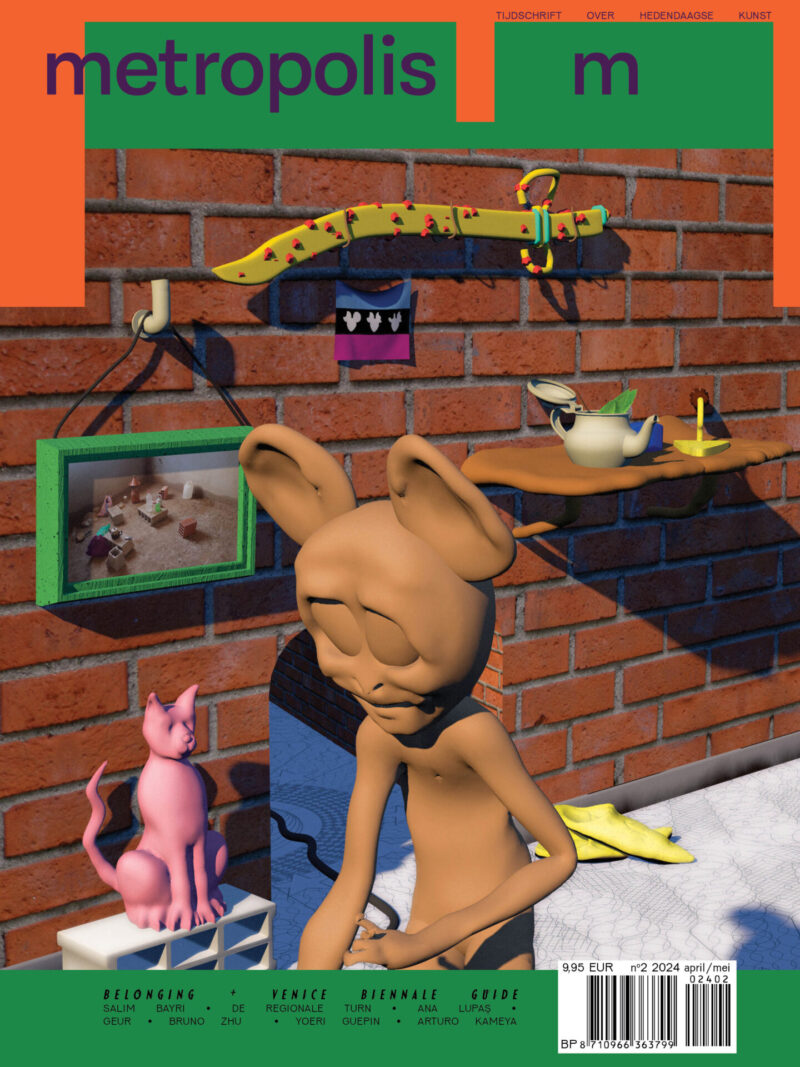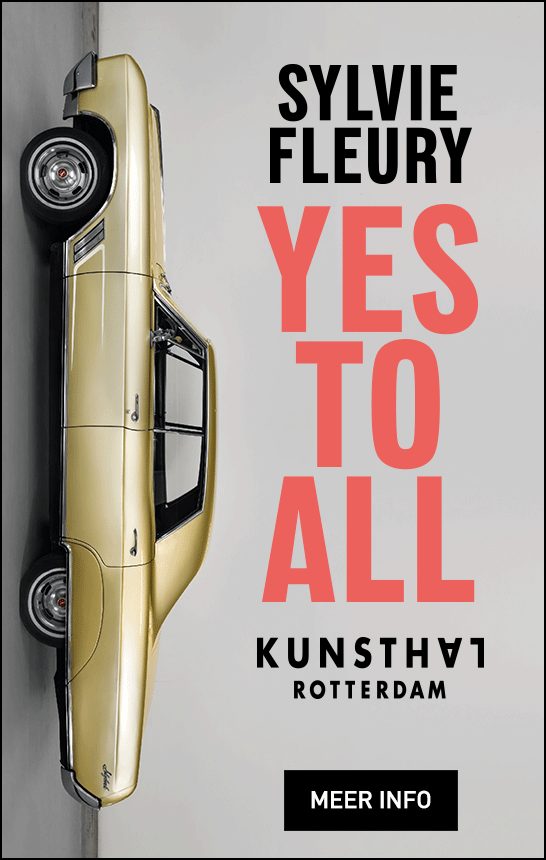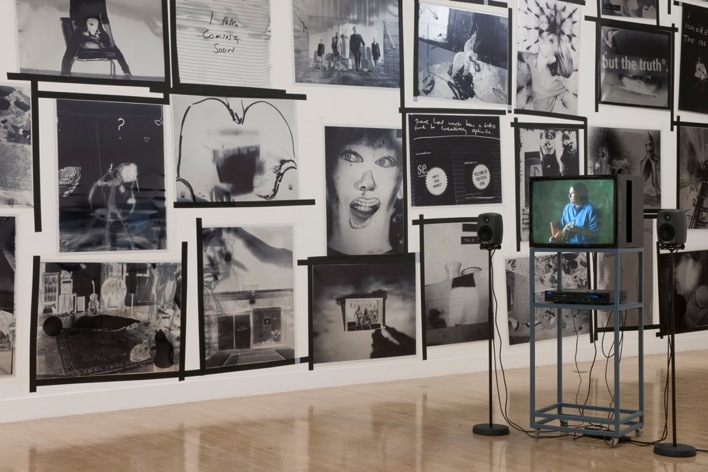
Clunie Reid and James Richards at Tate Britain From Scrap

While hinting at a recent history of avant-garde, Clunie Reid’s (1971) and James Richards’ (1983) exhibition at Tate Britain provides an experience of multiple simultaneous impulses of advertisements and visuals battling for attention. Both installations are composed out of cuts, shreds, remains and scraps through which the artists articulate a reading of the composition, focusing on the syntax of the work rather than on the individual elements.
The Art Now program, which this exhibition is part of, reflects upon and introduces to a wider public contemporary British art. It is locally considered as an acknowledgement of artists’ work whereas most of the artists selected already enjoyed some visibility in the UK (Clunie’s solo-exhibition at Studio Voltaire for example just closed and James had a solo exhibition at Tramway in Glasgow). But what seems a logical confirmation for Clunie Reid and James Richards stands in contrast to the work of the avant-garde group artists from the 1980s that both artists reference. The work by George Barber, Linder, Gorilla Tapes, Jon Savage, Art in Ruins and many others only recently received more attention and was reflected upon through exhibitions such as The secret Public, The Last Days of the British Underground 1978-1988, held at the ICA in 2007 and more dispersed interest by independent spaces such as Scratch!, 2008 held at Seventeen Gallery witch featured works by Gorilla Tapes, Goldbacher and Flitcroft, George Barber and The Duvet Brothers and also Misty Boundaries fades and dissolves at FormContent, where curator Daniela Saul featured work made during or in reference to the 1980s to the present day.
Maybe these recent efforts allow Clunie and James to work better or we have to thank them for their interest, which makes us look back at this recent history. In the 1980s we saw two conceptual strands; one that confronted the cultural and political issues of Britain head on – Thatcherite social policy, the problems in Northern Ireland and the Reagan-led American impact on global foreign policy – and another one concerned with aesthetics – the examination of the potential aesthetic qualities of scratch material and manipulated video. Both though used scrap material and found footage as the main material for their work, an approach that Clunie and James share.
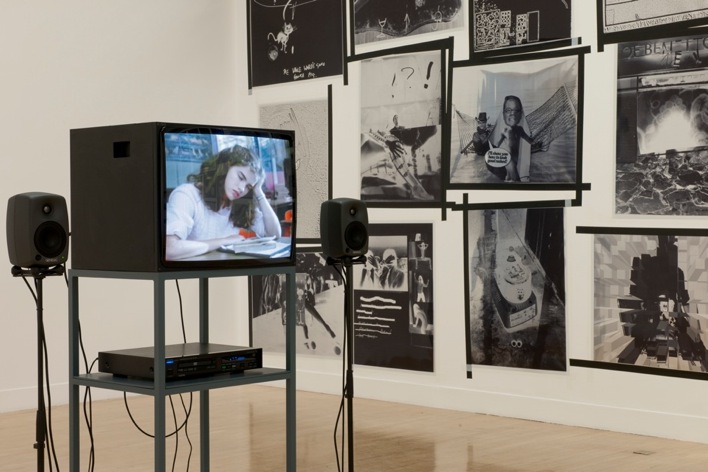
Clunie created Your Higher Plane Awaits for Art Now, an installation of silver ink jet print collages fixed with gaffer tape that cover a complete wall of the exhibition space. The images show material taken from fashion magazines overlaid with scribbles stemming from her studio, all combined with commercial slogans. Ironic messages such as ‘Where have all the ideas gone’ to ‘I’ll show you how to look good naked’ are alternated with manipulated figures; a face with a distorted open mouth or a massive head is placed on a tiny body.
Through this obvious manipulation she challenges the ideologies that the source images carry. Spelling mistakes and crossed out messages are left in place hinting at the swift process of installing and reflecting the speed and open endedness of her thought process. We are part of the installation; the glossy surface reflects the exhibition and the viewer in the work rather than opposing it. In an attempt of reading the images we become part of the process in which we question and create various multiple narratives. The effect of the gaffer tape here moves away from a clear grid in order to only focus on its use as a device to mount the prints. A decision that allows her to mirror the attitude applied to the production of the source material but also complicates the way we navigate from one image to the next. At first the messiness is annoying whereas we are confronted with our own inability to focus and generate sense out of the overload of visual material. Though it is this weariness, projected on the position of the viewer, which allows us to reflect on the way we read and construct messages.
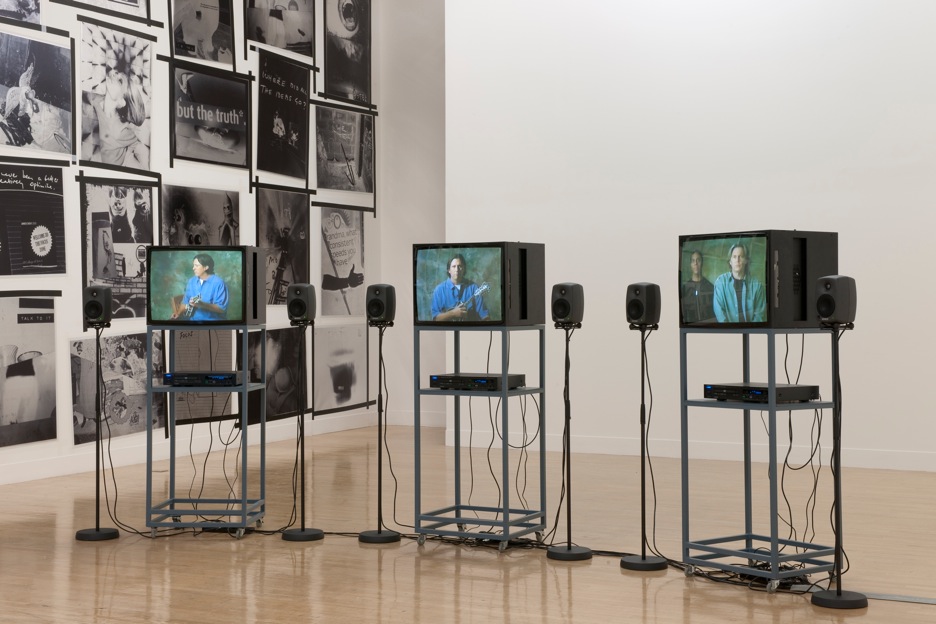
James Richards his video installation Call and Bluff, 2009, on the other hand is very considered and precisely orchestrated. Three monitors, on which footage from a promotional video for lighting equipment is presented, face a monitor with an edited sequence of shots from three different movies. All is bound together via a chorus and verse structure creating tension between the absurdity of the footage and the potential of a dialogue. We want to create a narrative through the images but our mind slips back to the impossibility of this task. The mesmerising effect is created through the rhythm of the repeated sequences; the three monitors show exactly the same scene and are placed in an interval with the fourth monitor. In contradiction to the 80ties we here do not longer reflect on the origin of the footage but on the composition of the lyrical structure. It is a poetic question generated through the spatial setting making use of found footage. Through the focus on the structure rather then on the status of the found material the potential of a message breaks down on the already broken narrative of the manipulated scrap video.
Where the work from the eighties was mainly concerned with the status of the material its use and its implications, here we notice an enquiry into the methods of observation and analysis. It is exactly this that forms the composition in the work of Reid and Richards and places the viewer and the maker in the same position – as to question, to be dubious about the rhetorics of representation. In this sense the work simultaneously deconstructs and constructs the structure of contemporary communication. The political agency is not longer to be found in reference to the origin of the material but in the way messages are generated, constructed and distributed. Both artists offer us a way to negotiate the structure rather then the message of communication and call for the importance of an emancipated viewer.
Pieternel Vermoortel
